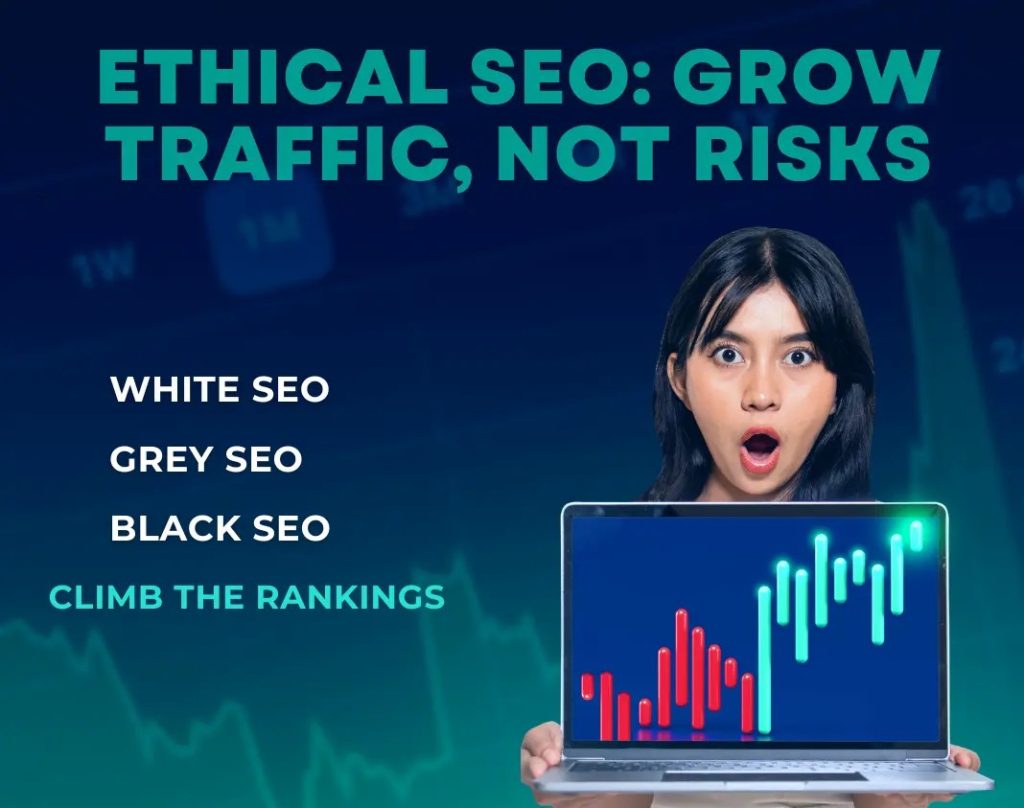White Hat, Grey Hat, and Black Hat SEO: What’s the Difference and Why It Matters
In search engine optimization (SEO), different techniques are used to improve a website’s visibility on search engines like Google. These strategies are generally divided into three categories: White Hat, Black Hat, and Grey Hat SEO. Understanding the difference between them is essential for building a successful and sustainable online presence.
White Hat SEO: The Safe and Ethical Approach
White Hat SEO refers to optimization techniques that follow Google’s Search Essentials (formerly known as Webmaster Guidelines). These practices focus on delivering real value to users and improving user experience. Common White Hat strategies include:
- Creating original, high-quality content
- Optimizing for relevant keywords without stuffing
- Improving website loading speed and mobile responsiveness
- Earning backlinks naturally through useful content
- Following proper technical SEO and schema markup
Advantages:
White Hat SEO is the safest and most sustainable way to improve rankings. It builds your site’s authority over time and avoids the risk of penalties or deindexing from Google. Though it may take longer to see results, it creates long-term benefits and trust with users.
Black Hat SEO: The Risky Shortcut
Black Hat SEO involves techniques that violate search engine guidelines. These tactics aim to manipulate search engine algorithms for quick results without considering the user experience. Examples of Black Hat methods include:
- Keyword stuffing
- Hidden text or links
- Cloaking (showing different content to users and search engines)
- Buying backlinks or using link farms
- Auto-generated or scraped content
Disadvantages:
While Black Hat techniques may offer fast improvements in ranking, they are extremely risky. Google’s algorithms are increasingly sophisticated and can detect these manipulative practices. Penalties can result in a dramatic drop in rankings or even complete removal from search engine results.
Grey Hat SEO: The Middle Ground
Grey Hat SEO falls between White Hat and Black Hat techniques. It includes strategies that are not strictly against the rules but could be seen as manipulative or borderline unethical. Examples include:
- Purchasing aged domains for SEO value
- Excessive link exchanges
- Slight content spinning
- Using clickbait-style headlinesThese tactics may not be explicitly banned, but they walk a fine line and may become violations as Google updates its policies.
Risk and Importance:
While Grey Hat SEO can yield short-term results with less risk than Black Hat, it’s still not fully safe. Search engines can change their algorithms or rules, making previously “grey” tactics penalizable in the future.
Comparison Table
| Feature | White Hat SEO | Grey Hat SEO | Black Hat SEO |
| Follows Guidelines | Yes | Partially | No |
| Risk of Penalty | Very Low | Moderate | High |
| Speed of Results | Slower but stable | Moderate | Fast but unstable |
| Long-term Benefits | Strong and lasting | Uncertain | Short-lived |
| User-Focused | Yes | Sometimes | Rarely |
Conclusion
Choosing the right SEO strategy is crucial for your website’s success. While Black Hat and Grey Hat methods might seem attractive for quick results, they come with serious risks. White Hat SEO remains the most reliable approach, offering ethical, user-friendly, and long-lasting improvements in your site’s search engine visibility. By investing in quality content and best practices, you ensure a stable online future for your business.

